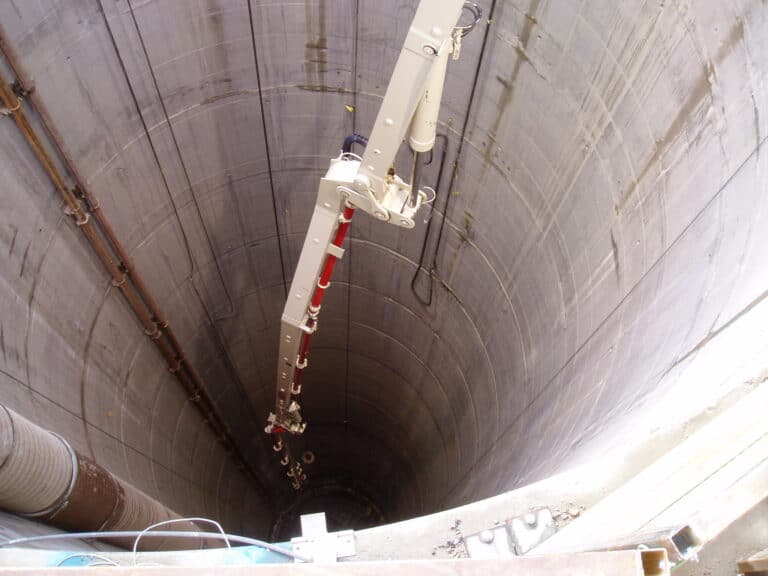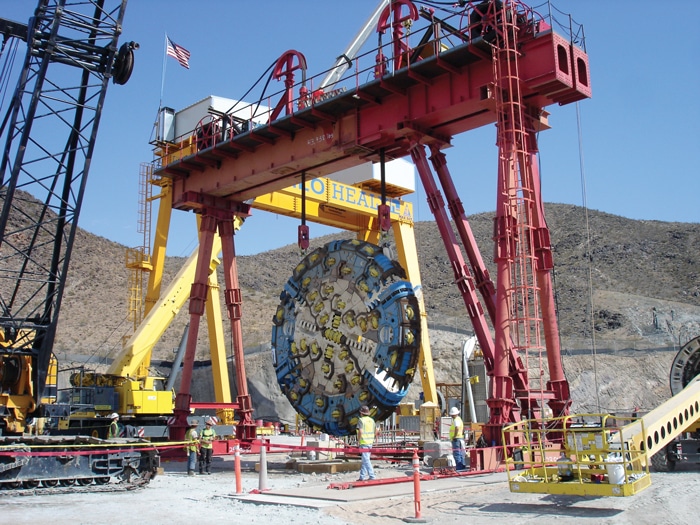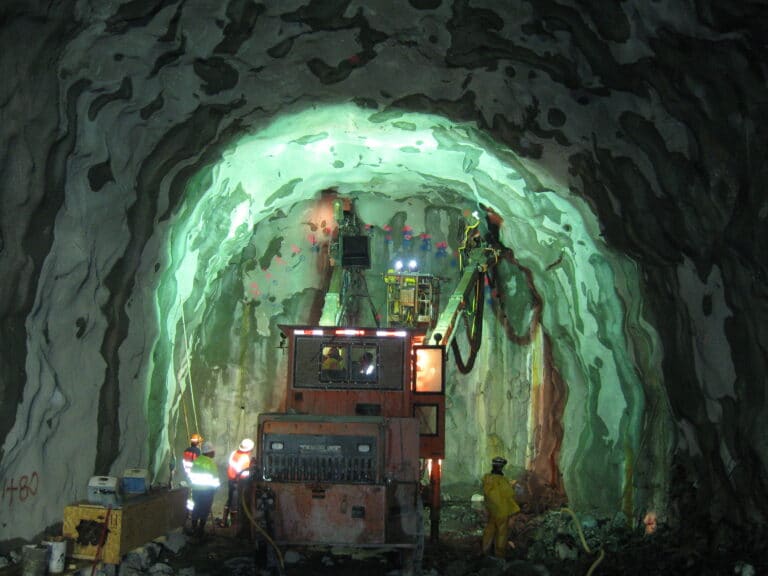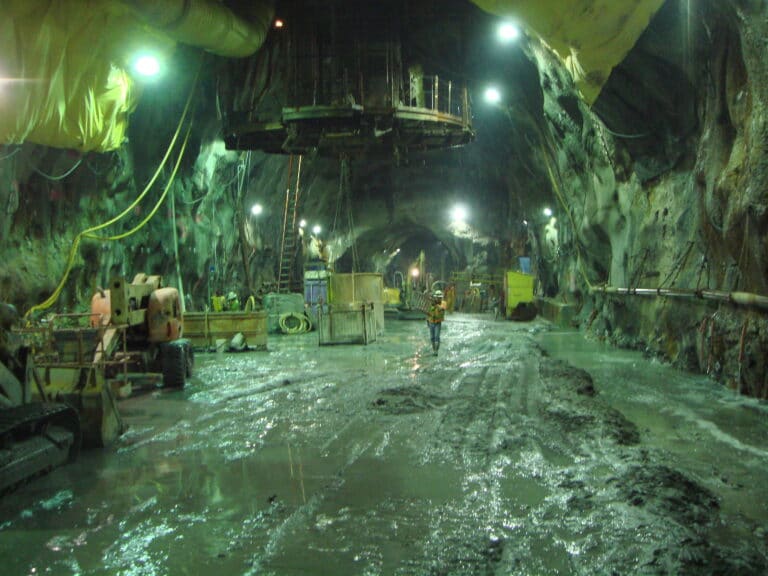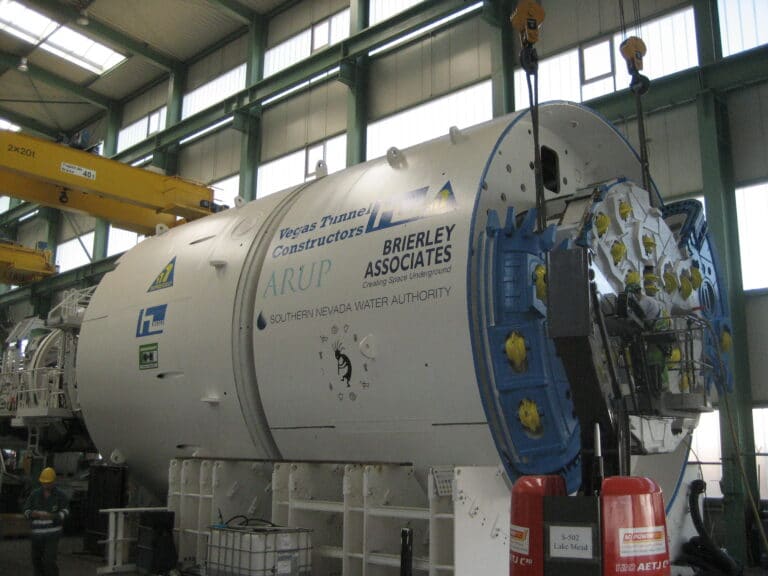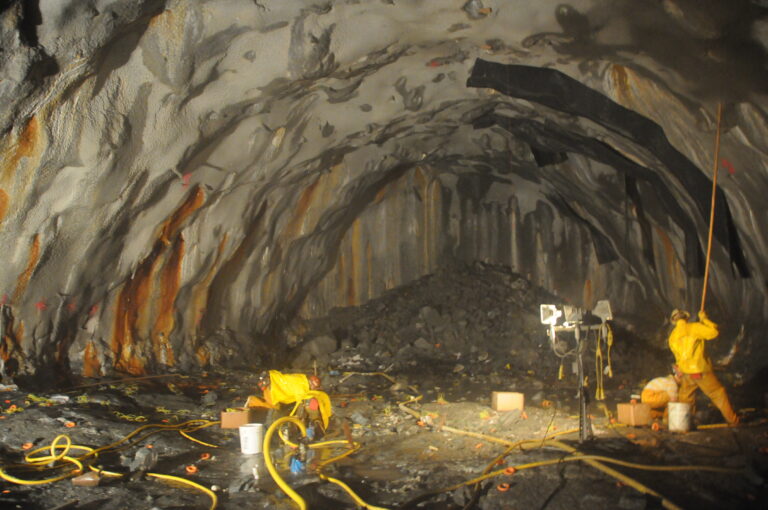Project At-a-Glance
- Design/Build delivery of the third deep water Lake Mead tap and conveyance
- 30‑ft diameter by 600-ft deep tunnel access shaft
- 300-ft long Tunnel Boring Machine (TBM) assembly chamber approximately 50-ft wide by 50‑ft high
- 20‑ft diameter, three mile long intake tunnel beneath Lake Mead and constructed under pressures up to 15 bar.
- Challenging ground conditions complicated by faults connected to Lake Mead
- Brierley Associates’ detailed geotechnical investigation and characterization led to identification of an alternative alignment to avoid the fault zone associated with inundation events.
Recognition
- Global Tunnel Project of the Year – 2015
- Tunnel Achievement Award for Project Excellence – 2016
- 2021 Outstanding Civil Engineering Achievement Silver Award from American Society of Civil Engineers
Lake Mead, which supplies 90 percent of Southern Nevada’s water, has dropped 110‑ft (34m) since 2000, a trend that continues into the foreseeable future. Given the circumstances and the need to have a reliable water supply, Southern Nevada Water Authority (SNWA) developed a program to construct and place into service a new third deep-water intake in Lake Mead. Major components of Lake Mead Intake No. 3 include, a deep-water intake riser and inlet structure; an intake tunnel driven beneath the lake and a portion of Saddle Island; a pumping station on Saddle Island; a discharge pipeline connection to the existing Alfred Merritt Smith WTF, and a tunnel connecting to the existing IPS-2 intake. During the course of this multi-year program, Brierley provided designs for contractors on: Lake Mead Intake No.2 Shaft Initial Support and Head Frame/Hoist Foundation; Intake No. 3 Surge Shaft and Connector Tunnel; Low Level Pump Station 3, Utility Bridge and Deep Shaft Pipe Rigging, in addition to Design/Build delivery of Intake No.3 led by Vegas Tunnel Constructors.
Challenging ground conditions in the form of faults with infilling of secondary mineralization with potential connections to Lake Mead resulted in the selection of a Herrenknecht Mixshield Hybrid TBM that could operate in open or closed mode and withstand pressures of up to 17 bar. During tunneling, 15 bar was encountered and successfully negotiated.

